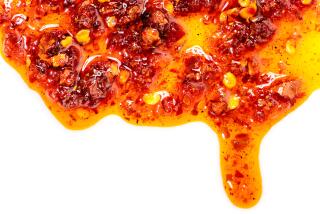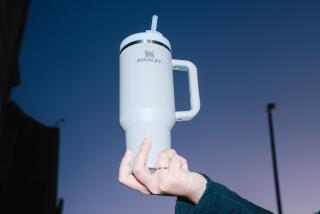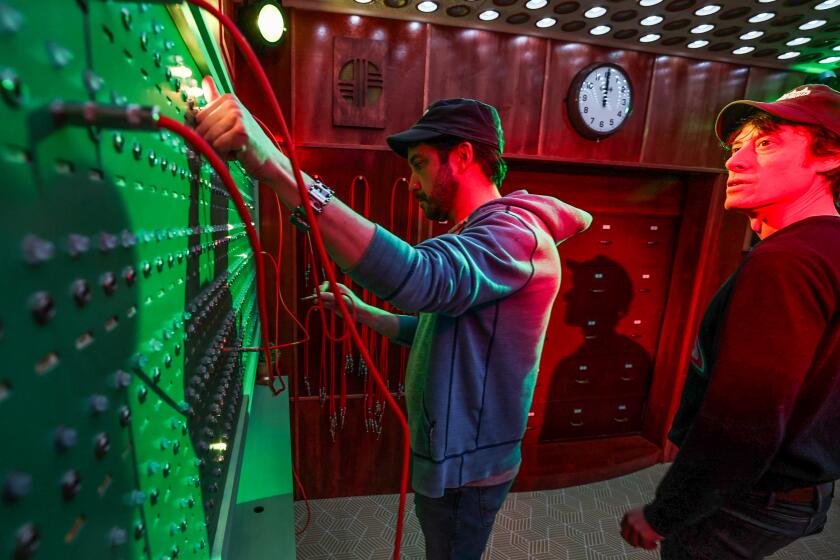MIT develops ketchup bottle that lets you use every drop
The research institution that brought you the fax machine and GPS has come up with another potentially world-changing invention: a bottle coating so slick that every last bit of ketchup slides out quickly and easily.
In what could be a disruptive technology for the ketchup industry, an MIT professor has found a solution to getting the last sticky globs of ketchup (or honey or jelly) out of a bottle.
No word yet on how it could affect ketchup sales, but the technology uses a new type of food-grade coating that has the slipperiness of a liquid, but the rigidity of a solid. In other words, it makes the ketchup come out faster, destroying the notion of “Anticipation,” the popular ketchup jingle from the 1970s.
The slick coating -- dubbed LiquiGlide -- was developed by the Varanasi Research Group, a lab run by Kripa Varanasi, a professor of mechanical engineering at MIT.
Varanasi’s lab has put videos online showing ketchup, mayonnaise, mustard and jelly sliding right out of containers treated with LiquiGlide, urged by nothing more than a gentle tilt of the container itself.
Varanasi, who worked at GE and did research for DARPA before starting his lab at MIT, is surprised and amused by the amount of attention his upgraded ketchup bottle has generated.
“It just went completely bonkers,” he said.
As a mechanical engineer who develops nano-engineered surfaces and coating technologies, Varanasi usually works on large-scale energy and water projects, like developing surfaces that keep ice off wind turbines and airplanes or dust off of solar panels.
His other research projects include inventing coatings that enable oil and water to flow through pipes with greater efficiency and considering solutions for how to cool nuclear reactors more effectively.
“We usually think about big things,” he said. “Big, big things.”
Varanasi’s research is generally funded by federal grants and money from private industry, but in the beginning of this year he decided he wanted the lab to bring a product to the consumer market. The super-slippery structured liquid coating that his team invented back in 2009 seemed like a good candidate.
“The real idea for this came from honey,” Varanasi said. “I was thinking about honey and how hard it is to scrape honey out of the bottom of the jar. At the end it is very difficult to get anything out.”
Varanasi said LiquiGlide is food grade and made of FDA-approved food materials. “It could even be made of organic food materials for the Whole Foods crowd,” he said.
The coating can be applied to both plastic and glass and even metal, and Varanasi said it can be applied relatively inexpensively using techniques that already are used to coat the insides of bottles.
“We’ve talked to all the people in the supply chain going from equipment makers to bottle makers to food companies, and they love the idea,” he said.
Varanasi isn’t going to stop with condiment bottles. He said variations on LiquiGlide can be applied to other types of bottles as well.
“Now we’re thinking about bottled cosmetics,” Varanasi said. “You buy this expensive lotion and half of it is in the bottle and doesn’t want to come out. All of us have been there. At least my wife has been there.”
ALSO:
Siri’s new gig: Being John Malkovich’s iPhone
New service turns your car into a talking personal assistant
Follow Deborah Netburn on Twitter or Google+







